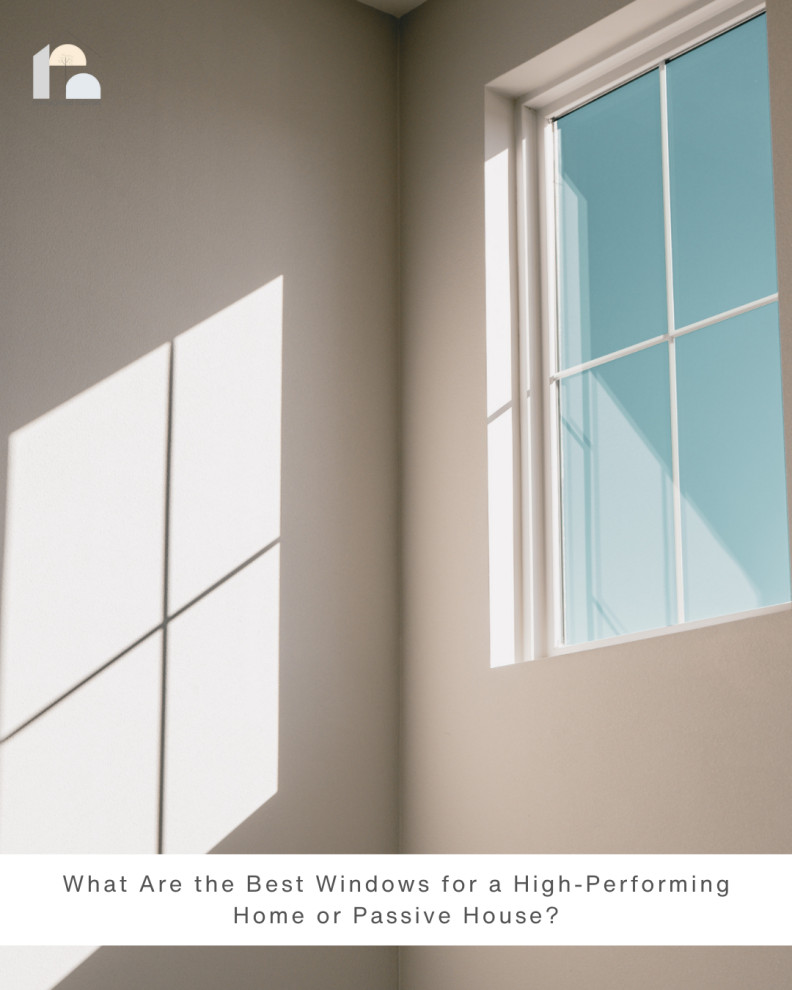What Are the Best Windows for a High-Performing Home or Passive House?

When designing a high-performing home — or aiming for Passive House certification — windows matter more than most people realise.
They’re not just about aesthetics or letting light in. Windows influence comfort, energy use, noise, ventilation, and even security.
So what kind of windows should you be looking for?
Why Tilt & Turn Windows Are the Standard for High-Performance Homes
A tilt and turn window is one of the most versatile, practical, and effective options for modern high-performance homes. These windows have two distinct functions:
- Tilt function: The window tilts inward at the top, allowing ventilation while preventing rain from entering. This is particularly useful for letting warm air escape, as hot air naturally rises.
- Turn function: The window opens fully inward like a casement, providing maximum airflow and easy cleaning from inside the home.
Compared to awning windows — which are far more common in Australia — tilt and turn designs offer several advantages:
- Better ventilation: Awning windows tilt outward from the bottom, which makes it harder to release hot air from a room. Tilt and turn solves this by opening from the top.
- Superior airtightness: Awning windows in Australia are often poorly sealed, leading to draughts. Tilt and turn windows provide a much tighter seal.
- Improved security: Awning windows can be easier to force open, while tilt and turn windows lock more securely and are harder to breach.
- Ease of cleaning: With tilt and turn, you can clean the exterior of the window safely from indoors — no ladders required.
All of this makes them a versatile, secure, and high-performing option that outshines typical awning windows for both comfort and practicality.
Why Tilt & Turn Is the Industry Standard for Performance
Tilt and turn windows are considered the default standard for Passive House and other high-performing buildings across Europe and increasingly in Australia.
Here’s why:
- Cost-effective: In most cases, tilt and turn windows are more affordable than sliding or bi-fold alternatives when manufactured to Passive House levels of airtightness.
- Limited options with other window types:
- Sliding windows can be made airtight, but they often cost more than tilt and turn systems.
- Sliding or stacking doors can be sealed, but they usually cost significantly more because achieving airtightness is much harder.
- Bi-fold doors are the most challenging. Only a handful of manufacturers globally offer Passive House-certified bi-folds, and they’re typically prohibitively expensive.
So, for most projects, tilt and turn windows are the most reliable and cost-effective option to achieve airtightness, durability, and Passive House performance.
The Case for uPVC Tilt & Turn Windows
When it comes to frame materials, uPVC (unplasticised polyvinyl chloride) is one of the most cost-effective and high-performing choices available.
- Durability: uPVC is weather-resistant, long-lasting, and requires minimal maintenance.
- Energy efficiency: When paired with double or triple glazing, uPVC frames provide excellent insulation and airtightness.
- Affordability: uPVC is typically more affordable than timber or aluminium frames, while still offering excellent quality and performance.
- Versatility: uPVC windows are available in a wide range of styles and finishes, so performance doesn’t mean compromising on design.
Paired with double glazing, uPVC tilt and turn windows offer a fantastic balance of quality, affordability, and performance — keeping homes warmer in winter, cooler in summer, and quieter year-round.
In Summary
If you want cost-effective, high-performing windows for your home — and especially if you’re aiming for Passive House certification — the humble uPVC tilt & turn window is hard to beat.
It’s the standard solution for a reason: airtight, durable, secure, affordable, and proven to deliver the performance that modern homes need.
Looking Beyond Double Glazing — Triple Glazed Windows from Net Zero Plus
At reimagined habitat, we often recommend triple-glazed windows when the project calls for maximum comfort, efficiency, and resilience. And through our sister company, Net Zero Plus, we’re able to supply some of the best options on the market.
Net Zero Plus offers three high-performance window types, each designed to meet different needs and budgets:
1. Alu-clad uPVC
- A uPVC frame for outstanding thermal efficiency, with an external aluminium cladding for durability and a sleek modern look.
- A fantastic balance of performance and aesthetics.
2. Thermally broken aluminium
- Aluminium frames with a thermal break to prevent unwanted heat transfer.
- Strong, slim profiles that suit modern architectural styles, without compromising energy performance.
3. Timber composite
- Natural timber interiors for warmth and beauty, combined with durable external finishes.
- Ideal for clients who want a natural aesthetic alongside Passive House-level performance.
All three options are triple-glazed and airtight, designed to support Passive House certification or achieve 8+ star NatHERS ratings. They also dramatically improve acoustic performance — keeping outside noise out — and enhance security.
By partnering with Net Zero Plus, we can integrate these window solutions seamlessly into you
